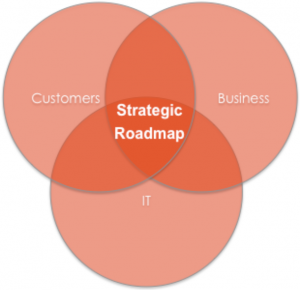THE STRATEGIC ROADMAP FOR AN APP
March 17, 2014
 Lately I have been writing a lot of proposals and we get a lot of questions about release schedules and assistance with the roadmap of both mobile and apps. A good roadmap in my opinion is a roadmap that takes multiple perspectives to create the complete/holistic view. Perspectives from end users, business goals and IT possibilities should be combined. But how do we get and align these in a strategic release calendar?more–>
Lately I have been writing a lot of proposals and we get a lot of questions about release schedules and assistance with the roadmap of both mobile and apps. A good roadmap in my opinion is a roadmap that takes multiple perspectives to create the complete/holistic view. Perspectives from end users, business goals and IT possibilities should be combined. But how do we get and align these in a strategic release calendar?more–>
1. People First
As I am in mobile I love to say Mobile first after Digital first, but truly I believe in People First. We are not in the business of creating feature apps, we want to make a difference, or how we like to call it: Apps with Impact. That means features are only relevant if we can translate the feature into a true user value. For that we have to have a good idea about who is the user and what he/she is trying to accomplish. This gives the app concept and we know how to improve it because we love to listen. Listen and adapt. Feedback in the App Stores and Markets is the primary feedback mechanism (or feed forward if you like). But off course there are more ways to collect the users input. By combining social media with the store feedback we get a good idea of what users want. We can even add a client panel to that to further complete the insights.
2. Business Goals
Business/Organization goals must align with the user goals for the app to be successful. We tend to think along the lines of four basic business goals for the app: Cost, Control, Sales and Service. Because it’s still the early days of Apps we are still looking for these, but these have settled for quite some time now. If you have more or different, please comment to this post. These four are very basic and the actual business goal might be a lot subtler or combine two of these four. From marketing perspective it is always interesting to gain attention, but adding value to the user should only do it.
3. IT
Most of the apps are backend integrated. This means that we touch the core IT systems and must connect with them. This also means that IT is a big factor in enabling the app. The calendar of IT is very important to create a realistic roadmap and or release calendar. Having services for the connectivity is almost a must. A few years ago a SOA was a nice to have and sometimes a very expensive set of single used services but these days with the split between the front end and the back end these services are used an reused multiple times. Finally the promise of SOA is here by using these services on web, app and even in desktop software. But having a good set of services for the web is not enough for mobile consumption. We should mobilize them by optimizing data usage and delivering exactly what an app needs. This of course also takes at least some time.

Venn diagram
Three perspectives and three calendars if you keep them separated. But we should combine them and see where we can find a match, where we find overlap like a Venn diagram. I state where but I actually mean when of course, we are looking to align them in time. From user perspective things could always be faster (as soon as yesterday), but they know not everything can be done at once and they understand they sometimes just have to wait a bit. From organization and specifically marketing perspective it is smart to not play all the aces at once and position releases that accompany the regular marketing calendar. This is a slow release concept to build up and gain multiple moments of attention. These releases have to be realistic and should be able to be delivered by the back end systems.
Tick-Tock
A good release calendar has multiple larger releases and in between one or two minor releases. This principle is sometimes called tick-tock(tock) and the best rated apps in store also manage this expectation in the release notes by not only mentioning what this release brings but also what is planned for the next release. This is really engaging the end user by asking them to contribute. But don’t forget: if you ask them, you’d better listen and take their valuable contributions in your roadmap.
By combining the feedback, the organization goals and the IT possibilities we can create the strategic roadmap for an app or even a complete palette of apps. This strategic roadmap becomes your marketing tool.

 English | EN
English | EN 